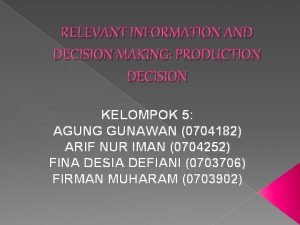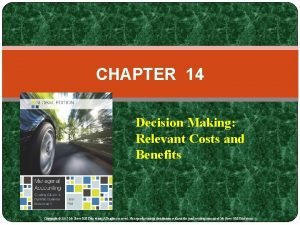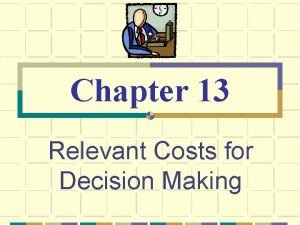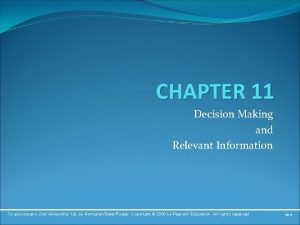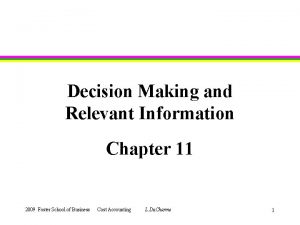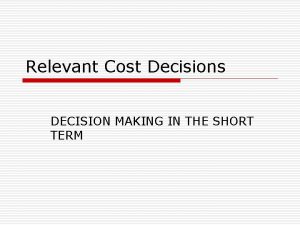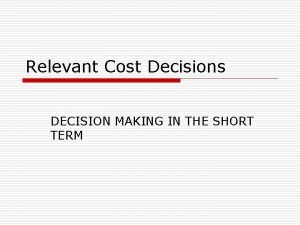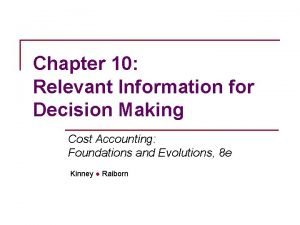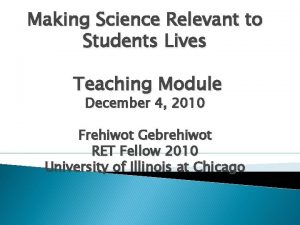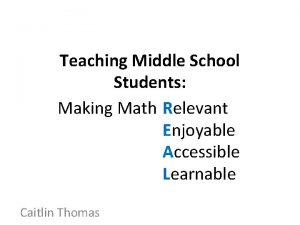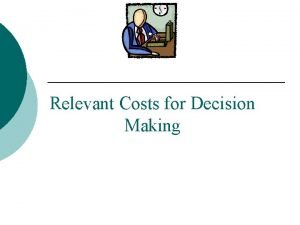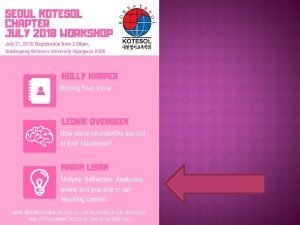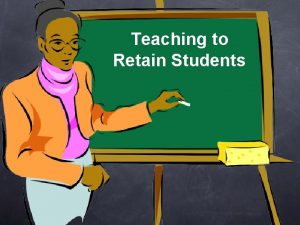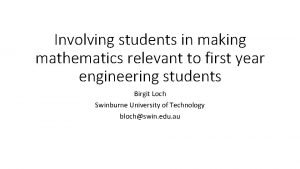Making Science Relevant to Students Lives Teaching Module











- Slides: 11

Making Science Relevant to Students Lives Teaching Module December 4, 2010 Frehiwot Gebrehiwot RET Fellow 2010 University of Illinois at Chicago

Overview of Student Population and Learning Environment � Students in 11 th Grade � Chemistry Class � Low mathematical skills � Do not see science as relevant � Difficulty grasping the microscopic (atomic) nature of scientific concepts � Lack of necessary lab materials and equipment � Lack of funding

Issues to be Addressed �How can I make my teaching more relevant to my students lives? �How can I provide more opportunities for my students to use technology to conduct investigations that are meaningful?

Goals of Teaching Module � 1) To engage students by infusing my curriculum with real world application of science � 2) To make connections between students lives and what they are learning � 3)To integrate technology for students to gain broader understanding of concepts being taught � 4) Expose my students to current scientific research

What I Learned as an RET Fellow �Most scientific research is based at the micro and nano scale �The application of technology in assisting research �The importance of collaboration �The importance of effective communication

Lesson Module Reasons for Approach � Students come from communities where substance abuse is a major problem � They themselves are at high risk for drug and alcohol abuse � The class content covers the structure of chemical compounds and chemical quantities � The topic of drugs will be studied within this content

Lesson Module Activities � Students will investigate the chemical structure and composition of major drugs � They will calculate chemical quantities of specific drugs such as molecular weight, percent composition, number of moles… � Teacher will present and discuss research poster “The Role of the Nucleus Accumbens Shell in Regulating Water and Salt Intake” � Make the connection with what we are learning � Students will watch video clips of teacher’s research experience � Discuss with students what I have learned in my research experience

Lesson Module Continued � Students will investigate brain cells and their structure using a digital microscope � Students will be assigned to research a specific drug � Students will collaborate to produce a Power. Point illustrating: ◦ The chemical structure and function of the drug ◦ How the drug alter the structure of the brain and the body’s normal function ◦ How addiction occurs and the biochemical pathways involved ◦ The drugs short and long term effects ◦ Current scientific research on addiction (drug)

Needed Equipment to Implement Module § Digital Microscope: ◦ ability to capture still image and video ◦ Full screen viewing ◦ Image sharing § Microscope Slides § Requested Assistance: $700

Learning Outcome � Thru this teaching module students will be able to: ◦ experience the connection between what they learn in the classroom and real life situations= meaningful learning ◦ greater understanding and appreciation of the microscopic nature of life ◦ knowledge of current scientific research ◦ greater engagement and ownership of their own learning

Acknowledgment �Dr Andreas Linninger, Program Director �Seon B. Kim, Program Assistant �Dr David Wirtshafter, Research Mentor �University of Illinois at Chicago �National Science Foundation RET 0743068
 Decision making and relevant information
Decision making and relevant information Five step decision making process
Five step decision making process Relevant cost for decision making exercises
Relevant cost for decision making exercises Relevant cost for decision making solution chapter 13
Relevant cost for decision making solution chapter 13 Decision making and relevant information
Decision making and relevant information Chapter 11 decision making and relevant information
Chapter 11 decision making and relevant information Decision making and relevant information
Decision making and relevant information 5 step decision making process
5 step decision making process Decision making and relevant information
Decision making and relevant information Relevant information for decision making
Relevant information for decision making Conversation about favorite subject
Conversation about favorite subject Why was/were rizal called the champion of filipino students
Why was/were rizal called the champion of filipino students
